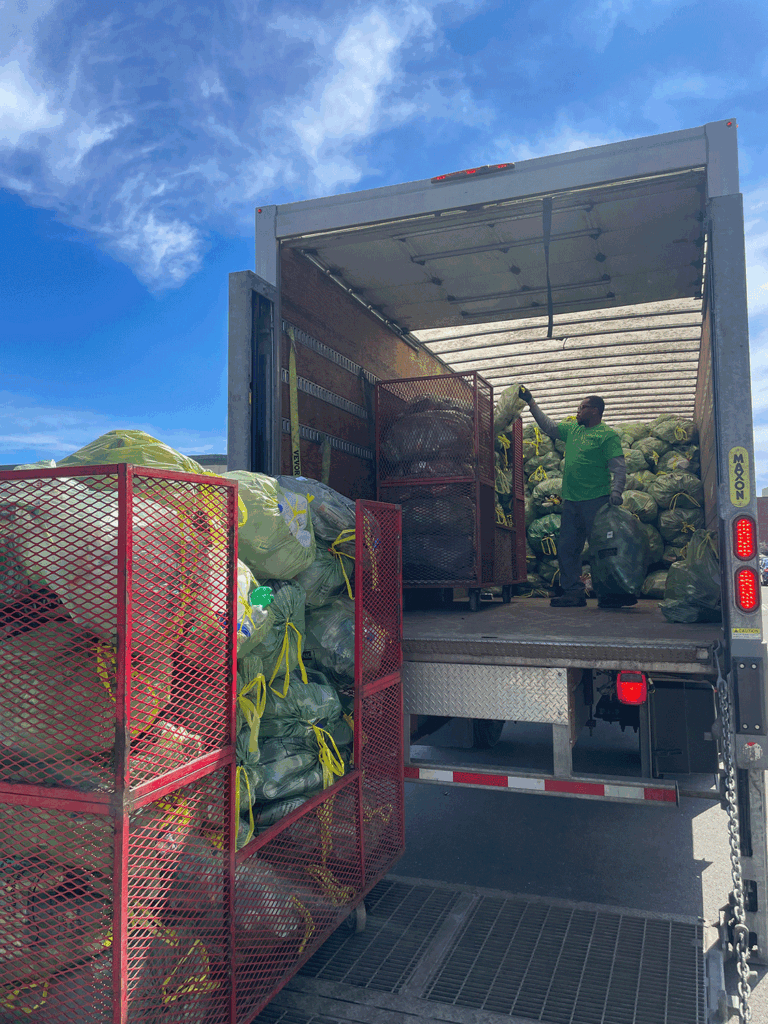
The positives of recycling are manifold: reducing waste in landfills, conserving natural resources, and lowering greenhouse gas emissions that may contribute to climate change, just to name a few.
Most of us are aware of the positive environmental impact of recycling. But one of the positives of recycling that you might not have considered is the practice’s economic effects.
The economic impact of recycling can be quite significant, boosting local economies and contributing to job creation while also minimizing costs for both private and public entities. Keep reading to learn more about how the recycling industry can create these monetary benefits.
How Recycling May Boost Local Economies
Recycling typically helps to stimulate local economies by creating a more circular flow of materials and money within those economies.
When consumers recycle their containers locally, the materials are sorted, processed, and sometimes even reused locally. The result is that more spending and jobs stay within the community, and there’s less need to import raw materials from elsewhere (such as abroad).
Local recycling centers and transport services can benefit from a steady flow of recyclable goods, with these businesses paying local taxes and supporting regional economic health.
Keeping waste out of landfills and turning it into a valuable resource can help communities create a more resilient and sustainable economy, benefiting small businesses as well as the area’s residents.
Job Creation Through Recycling Programs
Recycling programs create a wide range of employment opportunities throughout each step of the process, from collection and sorting at recycling centers to later steps such as processing and manufacturing.
For instance, according to the National Institutes of Health Environmental Management System, incinerating 10,000 tons of waste creates one job, landfilling the same amount of waste creates six jobs, but recycling that same quantity can create 36 jobs.
In addition, according to the US Recycling Economic Information Study, collectively, the more than 56,000 recycling and reuse establishments in the US:
- Employ approximately 1.1 million people
- Generate an annual payroll of $37 billion
- Have gross annual revenues of $236 billion
Not to mention that these are high-quality jobs, paying significantly higher wages than the national average for all industries.
Looking to the future, the recycling industry also promises major job creation. The Tellus Institute has found that increasing the average recycling rate in the US from 34 percent to 75 percent by 2030 could create over 2.3 million jobs.
Reducing Costs with Recycling
Recycling reduces the total amount of waste that must be collected and transported to landfills, reducing landfill fees, transportation costs, and burdens on costly waste management infrastructure. This means that diverting recyclable materials allows local governments to reduce their costs.
Bottle deposit programs, in particular, can shift the cost burden of recycling from taxpayers to consumers and producers, which is a more efficient and sustainable funding structure for these services.
Recycling’s Role in Sustainable Economic Growth
Let’s zoom out a bit to understand the overall effects of recycling on sustainable growth.
In addition to protecting the environment, recycling can contribute to greater long-term financial resilience for economies. One reason for this is that consumers and investors increasingly prioritize sustainability, so regions with strong recycling infrastructure are more appealing for investment than those with limited recycling options.
Recycling also incentivizes innovation in material reuse (and, by extension, product design that facilitates this reuse). Thus, recycling can even foster the development of green industries and sustainable technologies.
To sum it up, recycling isn’t just a sensible waste management strategy. Rather, it’s a major investment in communities’ future stability and prosperity.
Recycling Bottles and Cans with Bottle Drop Recycling
Bottle drop recycling is a form of recycling that involves filling bags with bottles and cans to drop off at a particular location. It’s often managed and run by private companies, such as CLYNK.
CLYNK offers an especially simple bottle redemption process to make recycling even easier and more accessible:
- Place bottles and cans into CLYNK’s designated green recyclable bags.
- Tag your bags with your personalized CLYNK bag tags (which you can print for free at a CLYNK kiosk).
- Bring your bags to your nearest CLYNK drop-off location.
- Scan your bags and drop them off.
CLYNK’s app also allows you to track how many containers you’ve recycled over time – CLYNK keeps a record of each individual’s overall recycling impact to incentivize further recycling.
To get started, sign up for CLYNK online by making an account, and you’ll be sent CLYNK cards, free bag tags, and a voucher for 10 recyclable bags to get you started. Or head to a CLYNK kiosk near you to sign up in person and get a membership card, a box of bags, and personalized bag tags.
To learn more about how recycling containers with CLYNK works, check out our FAQs page.